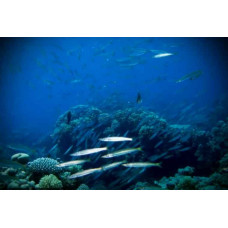From Latin Vicarius — substitute.
Similar fish species occupying different ranges - areas of distribution (geographical vicariate) or occurring in the same range but under different ecological conditions (ecological vicariate). In the first case, the ranges of the vicariate species may or may not overlap.
This is the name given to species of fish that replace each other in the fauna and flora of different countries. The degree of similarity between such forms can be very different: from identical species, although inhabiting areas far apart from each other and separated by natural barriers, or areas where these forms do not occur, all degrees of differences corresponding to varieties and species can be traced. In the first case, i.e. when the species are identical, there can be no question of vicariance or substitution, such species are called unrelated, but they can serve as relatives of vicariance, undergoing changes under the influence of external conditions. There are many examples of unrelated species.
This finding of identical or similar species in completely different localities is explained by the dispersal of organisms from their original habitats. The struggle with new living conditions (due to a different climate, competition with new organisms they encountered) led in many cases to more or less significant differences between representatives of the same species that settled in different localities. In the course of time, representatives of the same species became extinct in the intermediate areas, natural barriers (e.g. straits) formed, and thus the distribution of these forms that we see today emerged.
One of the reasons for the formation of substitute species was the Ice Age, which, as we know, covered a huge area of the northern hemisphere. As the glaciers expanded, temperate forms had to retreat southwards; on the other hand, the resulting drop in temperature allowed some northern forms to spread further south. When the temperature then began to rise again, the northern forms had to retreat to the more northern countries, and at the same time the representatives of a warmer climate, retreating to the south, began to move back north. At the same time, many forms underwent more or less important changes when adapted to the new living conditions, so that identical or more or less closely related species could appear in very distant places.
Vicarious species
Tags: Vicarious species

